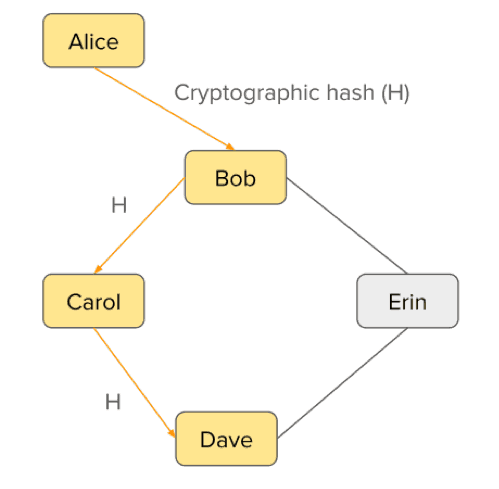Lightning Network’s Atomic Multipath Payments (AMP) Explained !!

Though Bitcoin’s price keeps moving up and down, its development is always going in one direction, i.e., ever forward and ever higher.
If we talk of Bitcoin (as technology) its fundamentals have never been so much stronger than now, and that’s because every month the Bitcoin developers are overcoming the engineering barriers to improve Bitcoin.
First Segwit, then now Schnorr Signatures, MAST, Taproot, Graftroot along with Lightning Network are just mind-blowing advancements that Bitcoin has made in last 12 months.
Last week we discussed Bitcoin’s Lightning Network Protocol and saw on a high level how it adds value to Bitcoin by making it a fast and cheap medium of exchange.
However, Lightning isn’t fully ready yet, and there are still mountains to climb and battles to win, but we are right on track.
One of the peculiar problems with lightning is that it wants to achieve everything in a peer-to-peer manner without relying on centralized hubs on the lightning layer.
This makes sending transactions of large amounts between different payers and payees very difficult, especially when they aren’t connected directly through a single channel.
And even if you find an indirect channel, you cannot just rely on one payment path as it might drain out the funds from that path in one direction.
https://twitter.com/jleophodl/status/995746317447127040
Let’s see this through an example:
We saw last time that Alice could send money to Dave via Bob & Carol acting as intermediaries. But this route or payment path will only work when both intermediaries (i.e., Bob & Carol) have atleast the same amount in reserve that Alice wants to transfer to Dave.
Like, if Alice is sending 0.05 BTC to Dave then for a successful lightning payment to happen both Bob & Carol also must have atleast 0.05 BTC in their respective payment channels to forward.
If this not the case then Alice’s payment will fail over the lightning network.
To solve this limitation of the lightning network, Bitcoin developers have suggested a new solution called Atomic Multi-Path Payments (AMP) over the lightning layer. This is a Lightning Network Routing technology which makes routing of large lightning payments possible on the network.
What lightning entails is that when you need to make a large payment, you can split it into multiple smaller amounts and then send it to the receiver via multiple payment paths or routes through different intermediaries.
However, there is a risk in this approach as the receiver might end up receiving partial payments if any of these multiple small payment routes fail.
To overcome this situation, the AMP protocol is designed in such a way that the receiver will either receive the full payment or nothing at all.
That’s why there is no middle ground for a receiver receiving the partial payments, and hence this approach is called Atomic Multi-Path Payments.
Getting Started with Bitcoin? Below is all you need:
- Use our list of Cryptocurrency Exchanges to Buy your first Bitcoin.
- Store your BTC is any of the Best Crypto Wallets we have listed, or better use a Hardware Wallet for more safety.
- Additionally, you can use bitcoin lending sites to earn interest on your bitcoin holdings.
If the LN implementation leverages functional AMP (atomic multi-path payments), your payment can be split up over multiple intermediary channel routes to later re-emerge at the destination as a full payment. So you can pay $10 if there are e.g. $1+$2+$3+$4 paths available.
— Eric Wall (@ercwl) December 30, 2018
Let’s understand AMP even more clearly through an example:
Suppose Alice wants to send 1 BTC to Bob and a direct channel doesn’t connect them.
However, Alice can find multiple indirect channel routes connecting to Bob, but none of the intermediary channels in each of the routing paths have atleast 1 BTC in them.
Alice is smart so she realizes that she can make an AMP payment to Bob as she can see that one route can send 0.5 BTC to Bob, another route can send 0.3 BTC, and another can send 0.2 BTC to Bob.
So this way through AMP, Alice is able to send 1 BTC to Bob, by spitting her payment in three (or theoretically) in even more paths, if required.
Of course, Alice could have done this without AMP also by sending smaller payments but this could result in a scenario where Bob only receive his partial payment !!
The scenario of partial payment can easily be a bigger problem for two parties engaging in a trade. For example, Alice as a customer wouldn’t be happy paying any amount while Bob as a merchant won’t provide any service or product for partial payments.
That’s why doing AMPs while transacting large amounts can be a savior as it either happens completely or doesn’t happens at all, keeping both the merchant & customer happy !!
Benefits Of Lightning Atomic Multipath Payments
Great way to visualize how Atomic Multi-Path payments work on Lightning Network via this emulator by @robtexdotcom https://t.co/nR2FlrBEcf pic.twitter.com/aYemtdIltY
— Jameson Lopp (@lopp) September 29, 2018
There are multiple benefits of Atomic Multi-Path Payments of the lightning network. Some of these are:
- It enhances privacy as more significant payments look like the smaller ones and in the background, only the sender & receiver knows how they are sending/receiving the payment through AMP.
- This also allows you to use the existing lightning wallets without making any significant changes to them.
- If any of the small payment routes fail, the whole payment fails and this is how the atomicity comes in to prevent scenarios like partial payments.
- AMPs also enhance the user experience as it allows you to send the most of your money available in your wallet to the other receivers. While in the absence of AMP, the user will be always be having a capped base limit that how much he or she can send despite having more money in the wallet, which can be a wired experience for the user. It is like you have 100 USD in the account, but you can only send $20 USD because the payment channels don’t support $100 yet!
Conclusion
Bitcoin Lightning network is an exciting technology, but it is not in its final form.
There are more solutions to be found and more engineering trade-offs to be considered that too without compromising the censorship resistance and decentralization of Bitcoin.
Certain more exciting pieces of technologies being developed under the umbrella of the lightning network are highlighted below by Jameson Lopp:
Just as Bitcoin's whitepaper only described the starting point, not Bitcoin's final form, so too shall it be with Lightning Network.
* Channel Factories
* Channel Splicing
* Submarine Swaps
* Cross-chain Atomic Swaps
* Atomic Multipath PaymentsWe're still in the first inning.
— Jameson Lopp (@lopp) May 13, 2018
Moreover, it is expected that with AMPs and Splicing technologies, most of the bitcoins will live on the second layer, i.e., Lightning Network, making our interaction with the base layer minimal.
Lastly, some critics in absence of AMPs have said that the lightning network is only suitable for micropayments and to be able to make it relevant for more significant transactions, the only way it can allow is by having centralized lightning hubs which will connect to several payment channels.
But now with the advent of atomic multi-path payments, there is actually no need for centralized and largely funded lightning hubs to be able to route large payments.
Hope you enjoyed this non-technical explanation of Lightning’s Atomic Multi-Path Payments.
If you liked this article? Do share it with your friends who want to know more about Lightning & AMPs !!
- Is Bitcoin Real Money?: Understanding Different Types Of Money - June 28, 2024
- Bitcoin Transaction Accelerator: 5 Services to Unstuck Your BTC - September 23, 2023
- What Is Bitcoin Private Key? Everything You Need To Know !! - June 2, 2023

